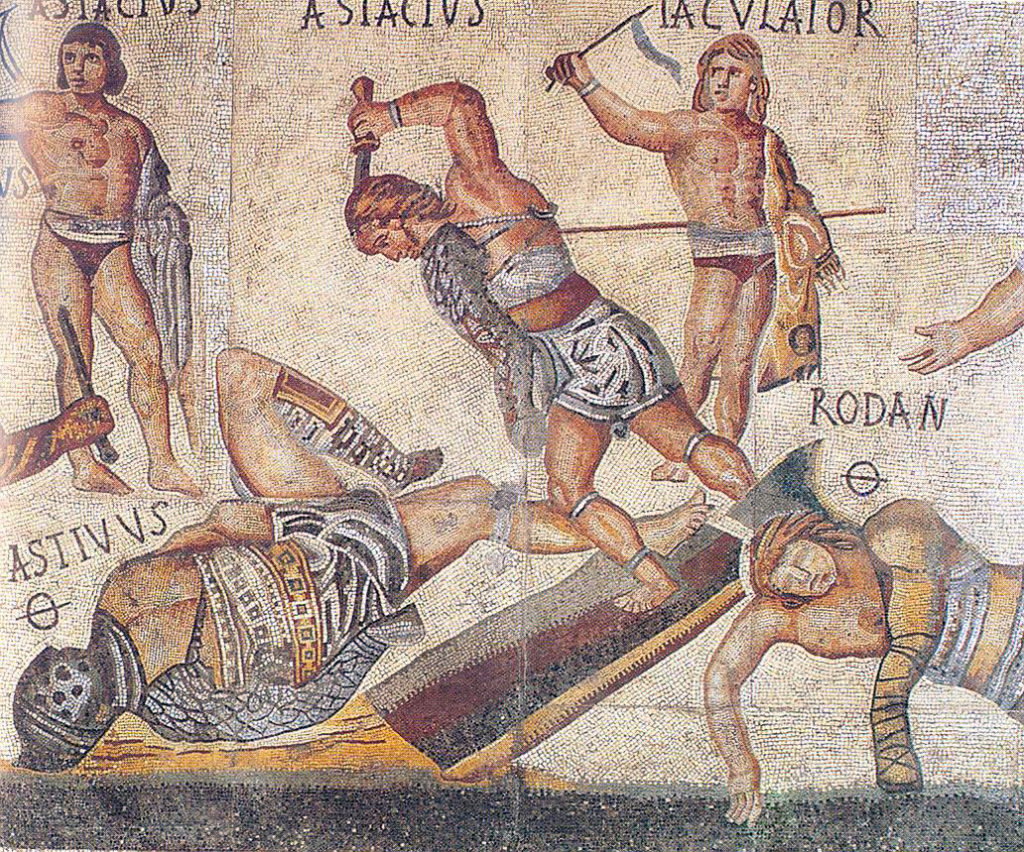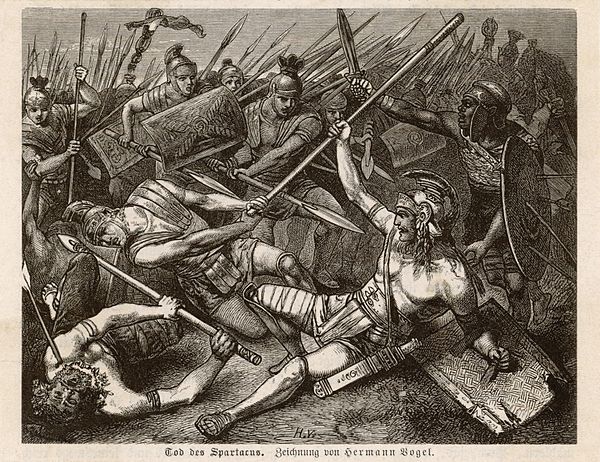Last updated on January 25th, 2023 at 12:05 am
Every age has its celebrities. In early modern England, they were actors on the stages of London’s theatres. In Belle Époque France, it was the dancers of the Moulin Rouge and the Folies Bergére.
Forty years after that, Charlie Chaplin, Buster Keaton, and Greta Garbo became the first stars of Hollywood. But before any of these, the ancient world had celebrities of a much more violent kind. These were the gladiators of the Roman Empire.

Roman gladiators lived difficult life, but one in which they could earn great renown. They were fighters who entertained Roman society in the roughly 400 amphitheaters in almost every city and town across the empire.
Now the gladiators often did not do so of their own free will. A significant proportion of them were slaves who were forced into fighting in this way by their owners, though some free men also took up the life of a gladiator on account of the fame that could be won in the amphitheaters.
The name gladiator comes from the ‘gladius,’ a short Roman sword that was the standard weapon carried by the gladiators.
The gladiators entertained the crowds at the amphitheaters by fighting each other, often to the death, though sometimes just until they disarmed their opponent.
At the same time, the gladiatorial contests often involved gladiators fighting animals such as lions and tigers. If a gladiator were a poor fighter, his life would be very short, but if he was a proficient warrior and won dozens of bouts, he could hope to retire and earn his freedom from his owner.
In this way, some gladiators retired as wealthy, free men. But who were the most famous Roman gladiators?
Who were the most famous gladiators?
Spiculus was one of the most acclaimed of all Rome’s gladiators. He fought in the sands of the amphitheater in the middle of the first century CE and became a particular favorite of Emperor Nero, who reigned from 54 CE to 68 CE
Nero even granted him extensive properties and money to recognize his fighting abilities and Spiculus features on several frescoes and mosaics from the early imperial period in Rome.
Another famed gladiator was Marcus Attilius, a contemporary of Spiculus. Attilius was a free-born Roman who probably volunteered to fight as a gladiator to relieve his debts.
When he was a rookie gladiator, he defeated a veteran and champion named Hilarus. Attilius enjoyed a long series of victories, and his exploits were recorded in graffiti discovered in the ruins of the city of Pompeii.
Slightly after Attilius and Spiculus’s time, Carpophorus, a bestiarii specializing in fighting lions and other wild animals. Another gladiator from this time, Hermes, is a relatively obscure figure, but one notable because the Roman poet Martial wrote a poem about him where every line begins with the word Hermes.
As one can tell from all of this, the first century CE was the heyday of the gladiators.
Even Emperors Fought as Gladiators.
The popularity of the gladiatorial contests continued into the second century CE. The adulation a Roman gladiator could earn even ensured that one of Rome’s emperors, Commodus, fought in the Flavian Amphitheatre (or Colosseum) in Rome.
Commodus was a secutor, a type of gladiator who carried a gladius and a heavy shield. He engaged in one-on-one combat with many other gladiators, each of whom was obliged to lose to the emperor. However, he always spared their lives.
Commodus butchered dozens of animals in single appearances at the Colosseum on other occasions.
A contemporary historian, Cassius Dio, relates his killing of 100 lions in a single day. However, the Roman aristocracy viewed his actions with disgust and deemed his behavior beneath the imperial title’s dignity.
Ironically, it ended when Commodus was strangled to death in his bath by a wrestler called Narcissus, whom he trained with.
The assassination had been ordered by his wife and a cohort of Roman senators who wanted to end his tyrannical reign.
Spartacus, the most famous Gladiator
But surely the most famous gladiator of them all, even more so than Emperor Commodus, was Spartacus.
Born roughly around 110 BCE, Spartacus was a Thracian tribesman from the region around modern-day Bulgaria or the small European part of Turkey.
Thrace, as the region was known in ancient times, was not a part of Rome’s great territories in the first century BC. Still, Spartacus found employment in the Roman military as a mercenary during the 80s BCE. He was subsequently arrested and enslaved for desertion.
He was made a gladiator due to his strength and fighting ability, so he ended up at a gladiator school in Capua in southern Italy.
Here he lived and fought as a gladiator throughout the early and mid-70s BCE. Then, in 73 BCE, he led a group of about 70 gladiators, including a great warrior called Crixus, in a slave revolt.

The Gladiator War, as it became known, gained enormous support amongst the poor and enslaved of Italy. Within a few months, the rebels had virtually seized control of southern Italy from Rome, with some 120,000 supporters.
They held the region for two full years before the Roman Senate decided to dispatch an army of eight legions consisting of approximately 40,000 men under the command of Marcus Licinius Crassus against them.
Spartacus’s gladiator army met Crassus’s Roman legions in combat at the Battle of the Silarius River, but the gladiator general’s forces could not match the Roman war machine.
His army was broken, Spartacus himself was killed, and 6,000 gladiators who had joined his army were crucified along the road from Capua to Rome to deter future rebels.
Thus, the greatest of Rome’s gladiators also became one of its foremost adversaries in the late Republican period, controlling much of Italy for two years.
Sources
Catherine Edwards (ed.), Suetonius: Lives of the Caesars (Oxford: Oxford University Press, 2000), Nero, Chp. 30.
Roland Auguet, Cruelty and Civilization: The Roman Games (New York, 1994), pp. 155–162.
Geoff W. Adams, The Emperor Commodus: Gladiator, Hercules or a Tyrant? (Boca Raton, 2013).
Barry Strauss, The Spartacus War (London, 2009).

